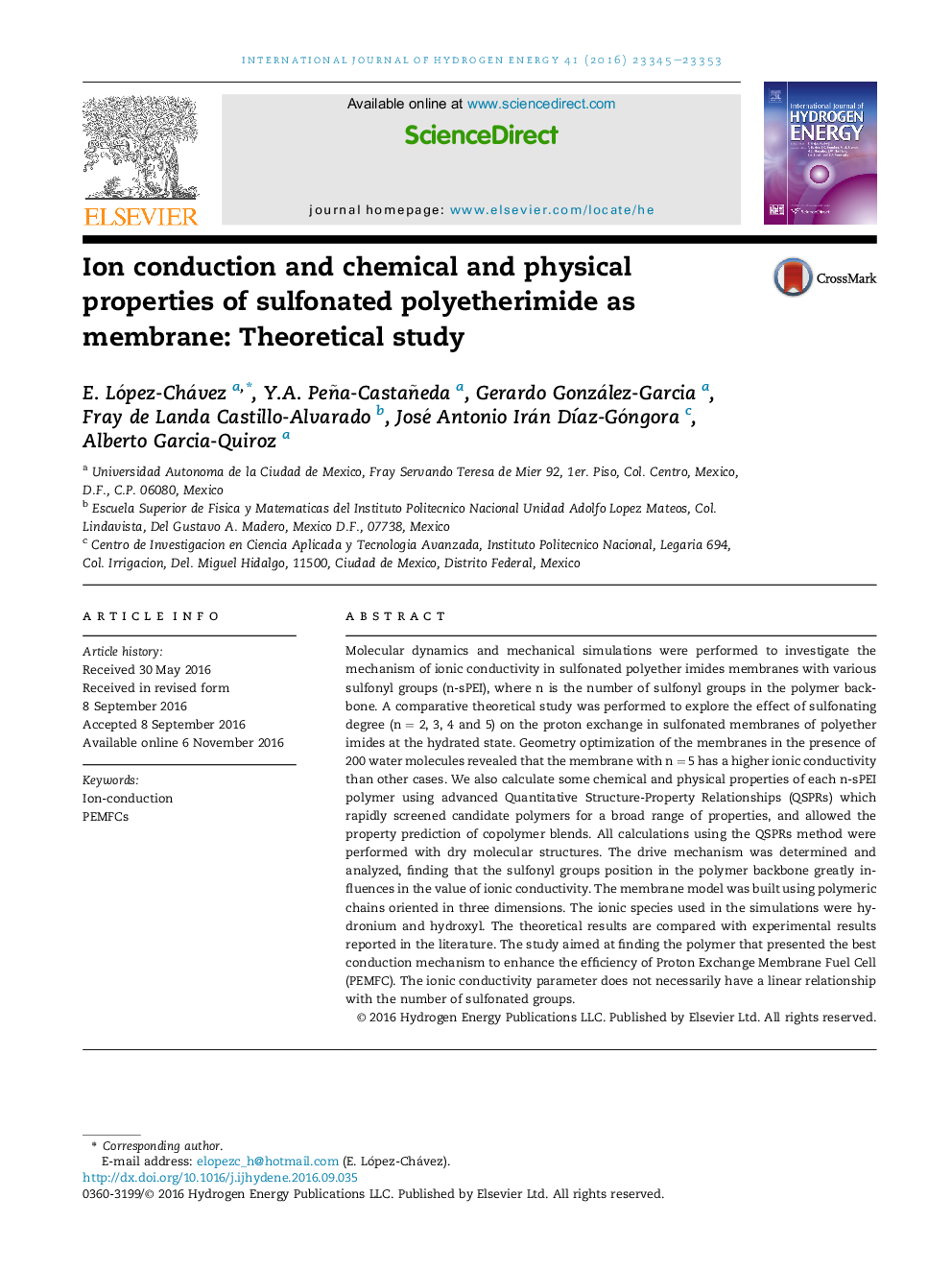| Article ID | Journal | Published Year | Pages | File Type |
|---|---|---|---|---|
| 5145860 | International Journal of Hydrogen Energy | 2016 | 9 Pages |
Abstract
Molecular dynamics and mechanical simulations were performed to investigate the mechanism of ionic conductivity in sulfonated polyether imides membranes with various sulfonyl groups (n-sPEI), where n is the number of sulfonyl groups in the polymer backbone. A comparative theoretical study was performed to explore the effect of sulfonating degree (n = 2, 3, 4 and 5) on the proton exchange in sulfonated membranes of polyether imides at the hydrated state. Geometry optimization of the membranes in the presence of 200 water molecules revealed that the membrane with n = 5 has a higher ionic conductivity than other cases. We also calculate some chemical and physical properties of each n-sPEI polymer using advanced Quantitative Structure-Property Relationships (QSPRs) which rapidly screened candidate polymers for a broad range of properties, and allowed the property prediction of copolymer blends. All calculations using the QSPRs method were performed with dry molecular structures. The drive mechanism was determined and analyzed, finding that the sulfonyl groups position in the polymer backbone greatly influences in the value of ionic conductivity. The membrane model was built using polymeric chains oriented in three dimensions. The ionic species used in the simulations were hydronium and hydroxyl. The theoretical results are compared with experimental results reported in the literature. The study aimed at finding the polymer that presented the best conduction mechanism to enhance the efficiency of Proton Exchange Membrane Fuel Cell (PEMFC). The ionic conductivity parameter does not necessarily have a linear relationship with the number of sulfonated groups.
Keywords
Related Topics
Physical Sciences and Engineering
Chemistry
Electrochemistry
Authors
E. López-Chávez, Y.A. Peña-Castañeda, Gerardo González-Garcia, Fray de Landa Castillo-Alvarado, José Antonio Irán DÃaz-Góngora, Alberto Garcia-Quiroz,
